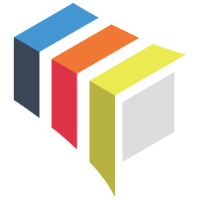QUESTIONS? CALL:
+1 (833) BOODSKAp
Leveraging IoT in Agriculture: Transforming Farming Practices with Boodskap | Olivia Parker
Leveraging IoT in Agriculture: Transforming Farming Practices with Boodskap
- The agricultural industry is undergoing a significant transformation, driven by the integration of IoT (Internet of Things) technology. IoT in agriculture enables farmers to enhance productivity, optimize resource use, and ensure sustainability. Boodskap's IoT Platform as a Service (PaaS) offers a comprehensive suite of solutions designed to meet the evolving needs of modern farming. This blog explores how IoT can revolutionize agriculture and the specific benefits provided by Boodskap’s platform.
- IoT technology equips farmers with the tools to monitor environmental conditions, soil health, crop status, and livestock well-being in real-time. Boodskap’s platform integrates a variety of sensors and devices to provide continuous data streams that help in making informed decisions.
- Soil Moisture Sensors: Monitor soil moisture levels to optimize irrigation schedules.
- Temperature Sensors: Track ambient and soil temperatures to protect crops from extreme weather conditions.
- GPS Trackers: Ensure precise location tracking of livestock and machinery.
- Precision agriculture involves using IoT to apply resources like water, fertilizers, and pesticides efficiently. Boodskap’s platform leverages data from various sensors to provide precise recommendations, minimizing waste and maximizing crop health.
- Variable Rate Technology (VRT): Adjusts the application rates of inputs based on real-time data.
- Drones and Aerial Imaging: Use multispectral cameras to assess crop health, identify pest infestations, and monitor growth patterns.
- Boodskap’s platform offers robust data analytics tools that convert raw data into actionable insights. Farmers can visualize data through intuitive dashboards, making it easier to understand trends and take appropriate actions.
- Real-Time Dashboards: Display current conditions and historical data for comparison and analysis.
- Predictive Analytics: Use historical data to predict future conditions and potential issues, enabling proactive management.
- Farmers can set thresholds for various parameters such as soil moisture or temperature. If these thresholds are exceeded, the platform automatically sends alerts via SMS, email, or mobile app notifications, allowing for timely interventions.
- Customizable Alerts: Tailor notifications based on specific needs and conditions.
- Multi-Channel Notifications: Receive alerts through multiple channels to ensure critical information is always accessible.
- A farmer using Boodskap’s IoT platform deploys soil moisture, temperature, and light sensors across their fields. These sensors continuously collect data and transmit it via LoRaWAN to the central platform. The platform analyzes the data and provides insights and recommendations on the dashboard. If soil moisture drops below a certain level, the system alerts the farmer to irrigate the field, ensuring crops receive the optimal amount of water and nutrients.
- Increased Crop Yield: Leveraging real-time data and precise recommendations helps farmers optimize their practices, leading to enhanced crop productivity.
- Resource Efficiency: IoT technology reduces the use of water, fertilizers, and pesticides, lowering operational costs and environmental impact.
- Improved Decision-Making: Access to accurate and timely data enables farmers to make informed decisions that improve overall farm management.
- Connectivity Issues: Ensuring reliable connectivity in remote and rural areas can be challenging. Boodskap’s platform supports various IoT protocols like LoRaWAN, Zigbee, and NB-IoT, designed to work in low-connectivity environments.
- Data Security: Protecting the vast amounts of data collected by IoT devices from cyber threats is crucial. Boodskap’s platform includes robust security features to safeguard data integrity and privacy.
- The integration of IoT technology into agriculture offers significant benefits, from increased yield and resource efficiency to improved decision-making. Boodskap's IoT Platform as a Service provides the tools and solutions needed to leverage IoT effectively in farming. By adopting these advanced technologies, farmers can ensure sustainable and profitable agricultural practices.
- For more information on how Boodskap’s IoT Platform can transform your agricultural operations, visit Boodskap.io.

